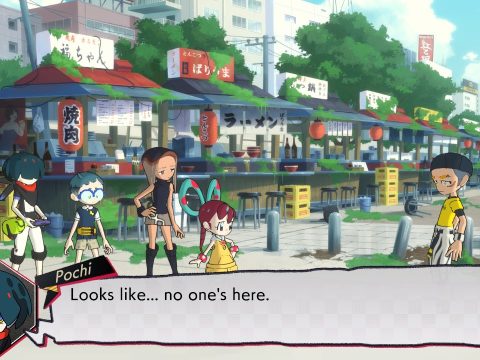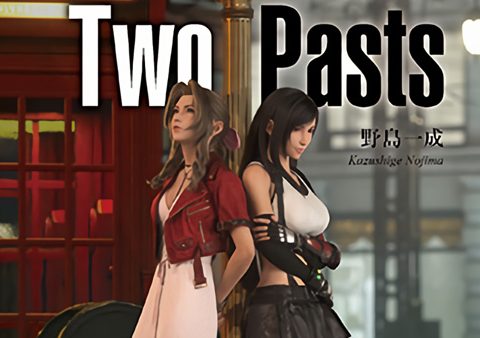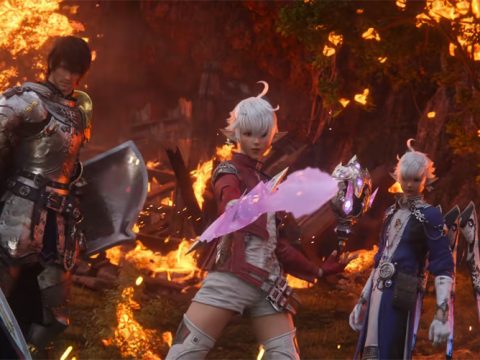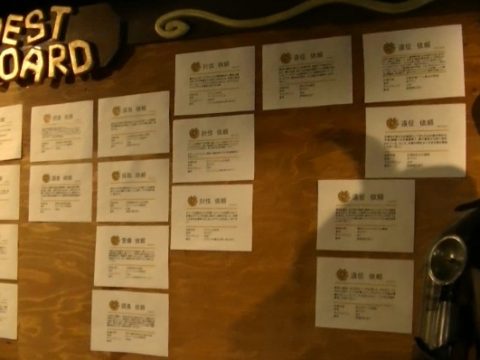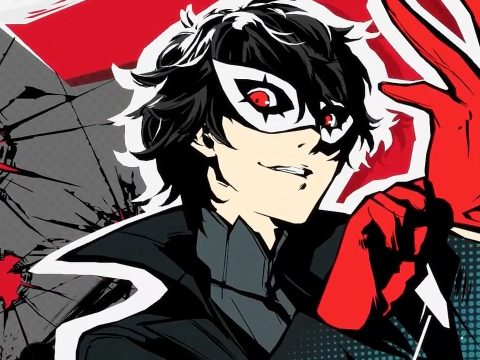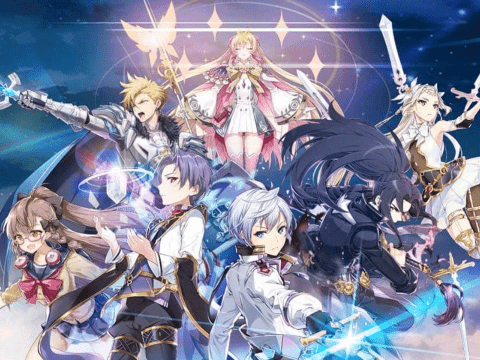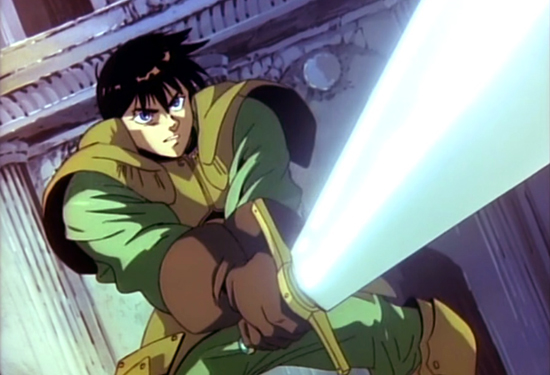
While watching The Legend of the Legendary Heroes—featured in the latest issue of Otaku USA—I couldn’t help but think of the 1990 Record of Lodoss War OVAs. Actually, that happens when I watch any anime that’s even vaguely fantasy-related, and it’s not because Lodoss War is particularly original or anything. In fact, it’s because Lodoss War is so incredibly unoriginal—practically a blank fantasy canvas upon which the most archetypal of heroes can illustrate their own legends—that it stands the test of time and holds up to repeat views to this day.
Let’s set the stage. Trouble is brewing in the world of Lodoss and its kingdoms, but it’s not the first time they’ve faced cataclysm. In fact, Lodoss was created through a truly world-rending event, in which the forces of Falis, God of Light, clashed with those of Falaris, God of Darkness. As the OVA intro dramatically describes, “The earth wept … the seas boiled.” When the dust on this first fracas settled, only two survivors remained on both sides: Marfa, Goddess of Creation, and Kardis, Goddess of Destruction. The result of this electric face-off was the end of the world as it was known at the time.
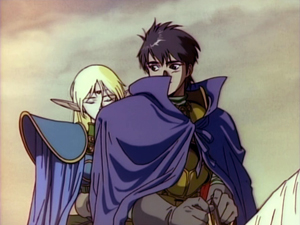 But with every end, there’s a beginning, right? A new land was born from the ashes of this conflict, and thousands of years later, the land to the south of the continent of Alecrast became known as “Lodoss – The Accursed Island.” But there’s a dark evil brewing once more, with the awakening of the witch Karla signaling a call to arms for a new group of heroes.
But with every end, there’s a beginning, right? A new land was born from the ashes of this conflict, and thousands of years later, the land to the south of the continent of Alecrast became known as “Lodoss – The Accursed Island.” But there’s a dark evil brewing once more, with the awakening of the witch Karla signaling a call to arms for a new group of heroes.
Record of Lodoss War practically begs for “player projection” in its protagonist, Parn, who may as well ask you to give him a name prior to the prologue episode. Early on we learn that Parn is following in his father’s footsteps, like any good RPG lead would see fit to do. He’s embarking on a mission for King Fahn wearing his pops’ old suit of armor, and he’s gathered a crew of various classes and skill levels to get the job done. Parn also wants to find out what happened to his father, but personal quests may have to go on the back burner as things heat up early on.
Joining him in his quest is Etoh, a kind-hearted old friend with healing abilities; Ghim, a gruff, powerful Dwarf with a short fuse; Slayn, a magician; resident thief and frequent comic relief Woodchuck; and Parn’s eventual love interest, the high elf Deedlit. Together they’ve got just about all it takes to counter the frequent threat of dragons, kobolds, and the impending threat of the evil witch Karla.
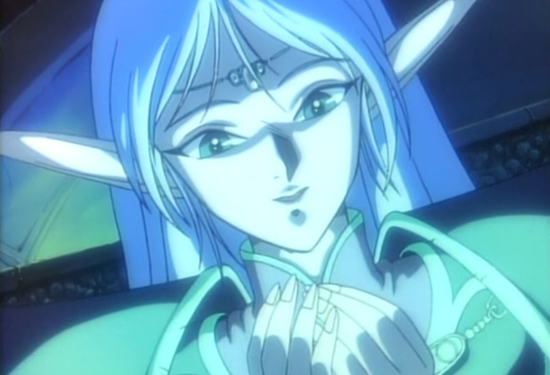
If the whole affair seems like someone transcribed their experience as a Dungeons & Dragons Dungeon Master, well, that’s not too far off the mark. What essentially began as a serialized transcription of a D&D session in Comptiq magazine was adapted into a series of fantasy novels by Ryo Mizuno (Rune Soldier), a selection of which serve as the basis for this Madhouse Studios-animated project. Akinori Nagaoka (the Soreike! Anpanman TV series and a handful of movies, various Dr. Slump projects and, it must be mentioned, assistant director on the burger-chompin’ Dracula: Sovereign of the Damned served as chief director on the original 13-episode Record of Lodoss War OVAs, with episode directors ranging from Junk Boy‘s Katsuhisa Yamada to Spriggan‘s Hirotsugu Kawasaki.
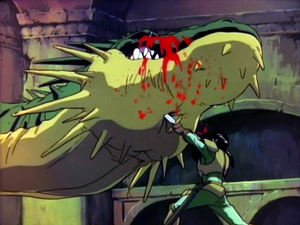 I’ll gladly admit that some of Lodoss War‘s staying power churns and bubbles due to nostalgia, but even a more recent viewing of the series proved there’s more to it than a warm fondness for old VHS tapes and Central Park Media DVDs. While it may not be a work of stunning originality, there is a weight to its action, most exemplified not in moments of fire-breathing, neck-piercing dragon battles, but in genuinely epic showdowns like the tragic clash between King Fahn and his former friend, the evil Emperor Beld. Beld, like most of the other villains—from the insane Wagnard to the give-every-13-year-old-boy-wood dark elf Pirotess—is about as straightforwardly evil as they come. There are glimpses of tragedy in the way their story unfolds, yes, and a few were indeed former allies, but they are undoubtedly the stark black to our heroes’ white.
I’ll gladly admit that some of Lodoss War‘s staying power churns and bubbles due to nostalgia, but even a more recent viewing of the series proved there’s more to it than a warm fondness for old VHS tapes and Central Park Media DVDs. While it may not be a work of stunning originality, there is a weight to its action, most exemplified not in moments of fire-breathing, neck-piercing dragon battles, but in genuinely epic showdowns like the tragic clash between King Fahn and his former friend, the evil Emperor Beld. Beld, like most of the other villains—from the insane Wagnard to the give-every-13-year-old-boy-wood dark elf Pirotess—is about as straightforwardly evil as they come. There are glimpses of tragedy in the way their story unfolds, yes, and a few were indeed former allies, but they are undoubtedly the stark black to our heroes’ white.
Record of Lodoss War didn’t just stop at the OVAs. There’s a wealth of material out there to absorb, from manga like The Grey Witch—written by Ryo Mizuno and illustrated by Yoshihiko Ochi—to the 27-episode follow-up anime, Chronicles of the Heroic Knight. None are as avoidable, however, as Legend of Crystania, a desperately limp mid-90s film and 3-episode OVA that primarily centers on the dark knight Ashram and Pirotess, now known as Lady Sheru. You know what? Just stick with the original Record of Lodoss War OVAs. While the animation won’t blow anyone away, it’s solid, and the events are well-paced throughout. The ball is in Media Blasters’ court now, so hopefully we’ll be able to own some nice new copies of this series in the not-to-distant future.
©1990 Group SNE / Kadokawa Shoten Publishing Co., Ltd/Marubeni Corporation/Tokyo Broadcasting System


